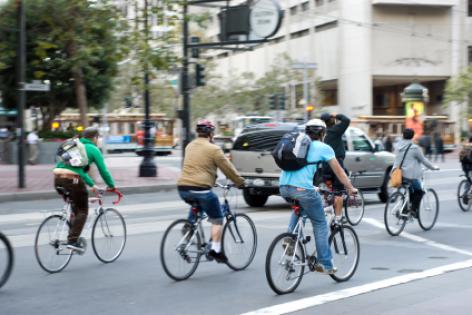There is little a bicycle rider can do to prevent the most dangerous overtakes from happening according to a new study from the University of Bath and Brunel University. Instead, the researchers suggest, if we want to make cyclists safer, it is our roads, or driver behaviour, that need to change.
The study set out to ask whether drivers passing a cyclist responded to how experienced the cyclist looked. It was expected that drivers would give more space to a rider who seemed inexperienced and less space to a rider who looked highly skilled.
One of the research team, Dr Ian Garrard from Brunel University, used an ultrasonic distance sensor to record how close each vehicle passed during his daily commute in Berkshire and outer London.
Each day, he chose one of seven outfits at random, ranging from tight lycra racing cyclist clothes (signalling high experience) to a hi-viz vest with “novice cyclist” printed on the back (signalling low experience).
He sometimes also wore a vest that said he was video-recording his journey, or a vest modelled on a police jacket but with “POLITE” printed on the back. The same bicycle was used every day, and was always ridden in the same way. Over several months, data were collected from 5,690 passing vehicles.
The researchers found that, while the vest that mentioned video-recording showed a small increase in the average amount of space drivers left, there was no difference between the outfits in the most dangerous overtakes, where motorists passed within 50 cm of the rider. Whatever was worn, around 1-2% of motorists overtook within this extremely close zone.
Dr Ian Walker from the University of Bath’s Department of Psychology, who led the project and analysed the data, said: “Many people have theories to say that cyclists can make themselves safer if they wear this or that. Our study suggests that, no matter what you wear, it will do nothing to prevent a small minority of people from getting dangerously close when they overtake you.
“This means the solution to stopping cyclists being hurt by overtaking vehicles has to lie outside the cyclist. We can’t make cycling safer by telling cyclists what they should wear.
“Rather, we should be creating safer spaces for cycling – perhaps by building high-quality separate cycle paths, by encouraging gentler roads with less stop-start traffic, or by making drivers more aware of how it feels to cycle on our roads and the consequences of impatient overtaking.”
Dr Walker previously used similar equipment to show that men and women are treated differently by passing motorists – a finding since confirmed by researchers in the USA and Taiwan – and that long vehicles such as buses and trucks get closer than cars when overtaking cyclists.
While the study also found that high visibility vests and jackets made no difference to the space left by overtaking drivers, it did not try to look at whether these devices made cyclists more visible at intersections or at night. However, the researchers do note in their paper – published in the journal Accident Analysis and Prevention – that there is surprisingly little evidence that high-visibility clothing for cyclists and motorcyclists offers any safety benefits in daytime. This would further support the idea that there is no easy fix for riders’ safety from asking them to wear bright clothing. Check the blog here for fleece jackets.

















__small.png)










